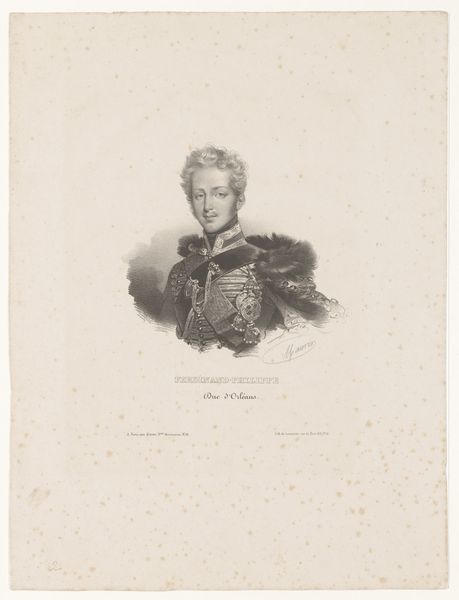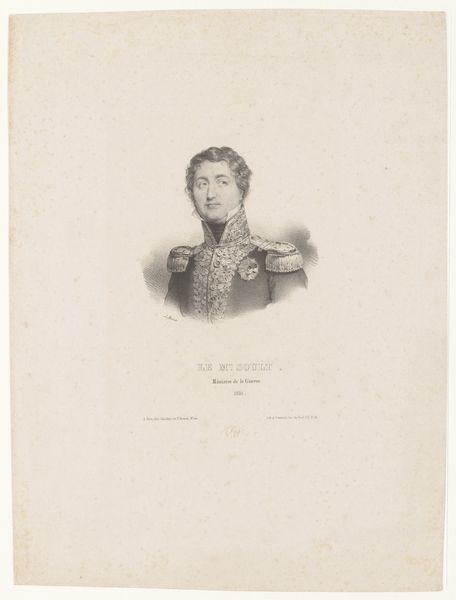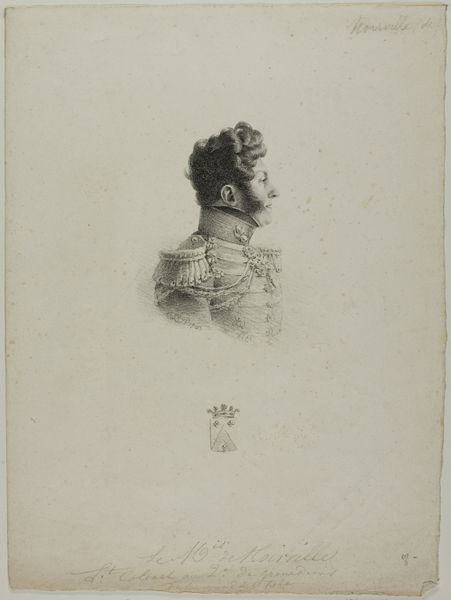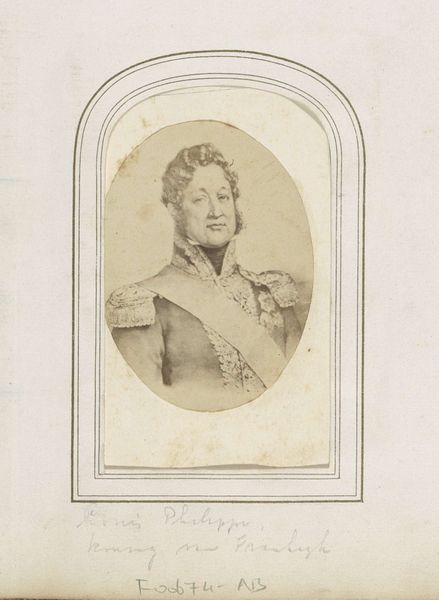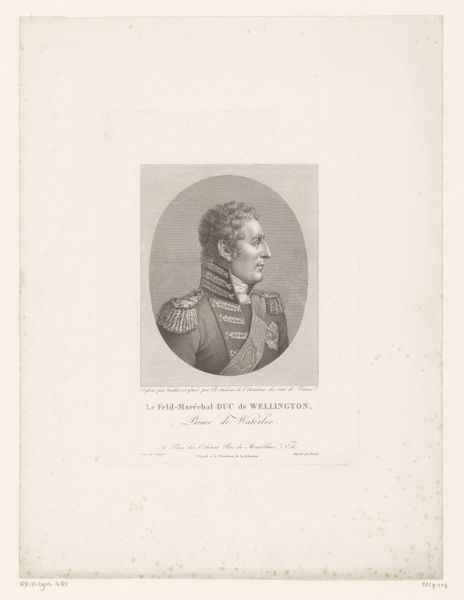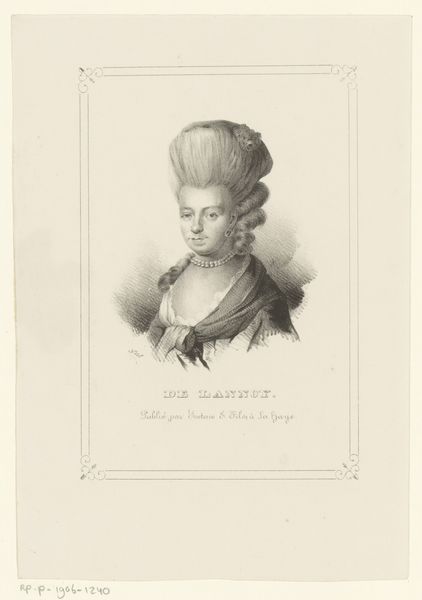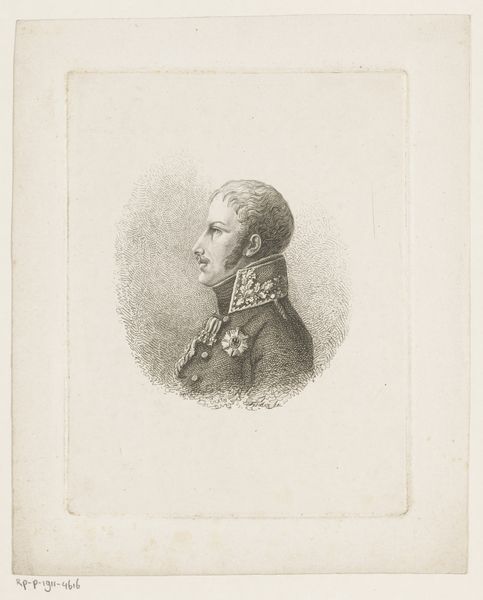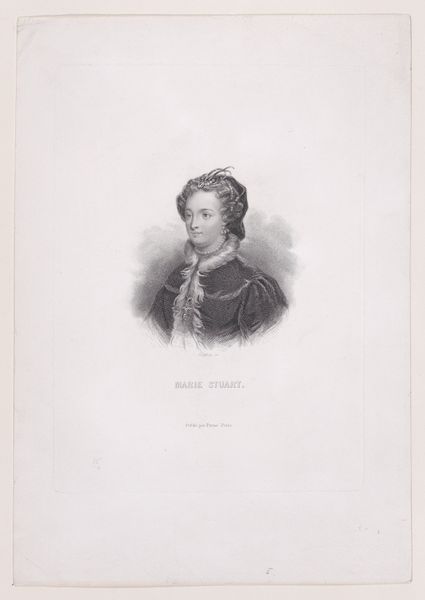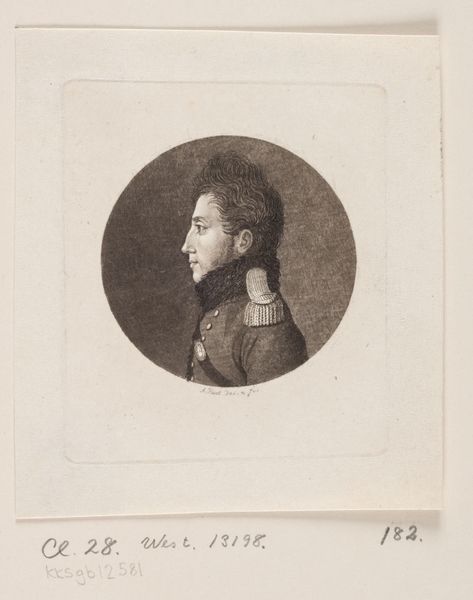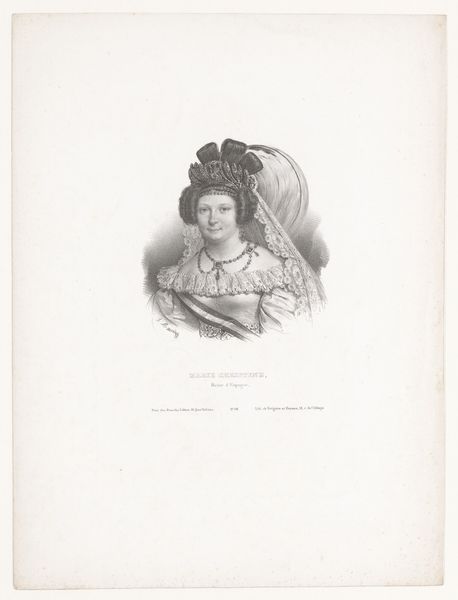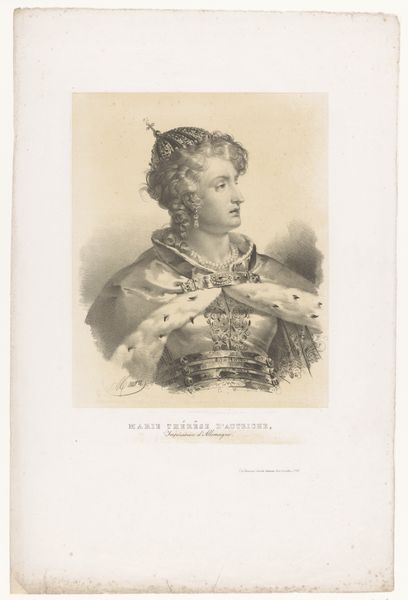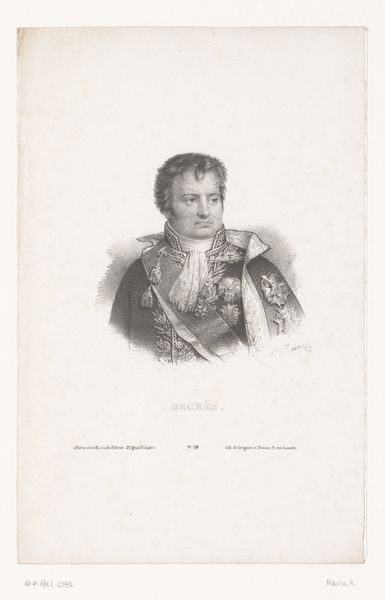
Portrait of Maréchal Marmont, Duc de Raguse 1817
0:00
0:00
drawing, lithograph, print, paper, engraving
#
portrait
#
drawing
#
neoclacissism
#
lithograph
# print
#
paper
#
france
#
history-painting
#
engraving
Dimensions: 148 × 126 mm (image); 323 × 240 mm (sheet)
Copyright: Public Domain
Curator: Welcome, everyone. Today we’re looking at Charles Edward Crespy Le Prince’s "Portrait of Maréchal Marmont, Duc de Raguse," a lithograph from 1817 now residing here at the Art Institute of Chicago. Editor: Immediately, I'm struck by the meticulous detail. The fineness of line achieves a remarkable tonal range despite the monochrome palette. It almost looks like a highly detailed pencil drawing. Curator: Indeed. Le Prince was operating during a period when lithography was gaining popularity as a means of replicating images and distributing them widely, influencing public perception of political figures. Marmont, as one of Napoleon’s Marshals, was a figure of considerable public interest and scrutiny at the time. Editor: And look at how that rigid, erect posture interacts with the decorative details of the uniform. It almost suggests a tension between the man and the role he inhabits. Notice how the artist uses the light to model Marmont’s face, creating a powerful profile. Curator: This portrait participates in a larger cultural trend of image-making intended to shape the narrative around key political actors in post-Napoleonic France. The presence of the crest serves to enhance his nobility. Editor: The contrast between the precision in rendering Marmont’s features and the more schematic representation of the coat of arms above is interesting too. It focuses our attention right onto his gaze and confident demeanor. Curator: Consider that lithography democratized portraiture. Aristocrats and members of the upper middle class would have previously been the primary subjects of painted portraiture, with those portraits staying within private residences, so the transition to mass-produced prints intended for wider distribution indicates how perceptions of portraiture began to change. Editor: For me, there's an undeniably graphic quality, a deliberate reduction of form to its most essential elements. And there’s something almost cold, something emotionally removed about that stark linearity, perhaps reflecting the period’s neo-classical emphasis on order and restraint. Curator: Fascinating. I tend to read into such pieces from the lens of socio-political meaning, thinking through how printed portraits such as these influenced French society’s thinking in an age of considerable political transition. Editor: Well, seeing how all the pictorial components unify is quite impressive. Thanks for giving us a chance to dive into all these elements!
Comments
No comments
Be the first to comment and join the conversation on the ultimate creative platform.
